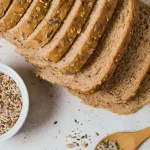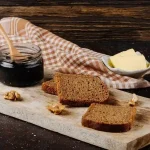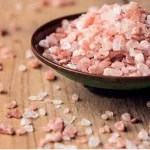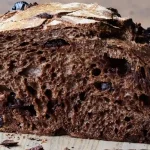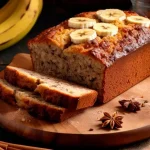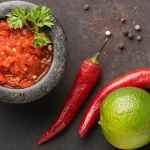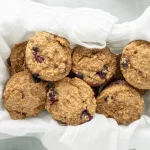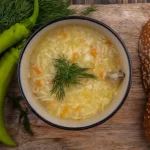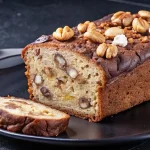There’s something magical about walking into a warm home after a chilly fall day, greeted by the incredible aroma of dinner that’s been cooking itself all afternoon. That’s the beauty of slow cooker recipes during fall and winter—they transform your kitchen into a cozy haven without demanding constant attention.
As someone who relies on my slow cooker throughout the colder months, I’ve learned that these appliances are absolute lifesavers when schedules get hectic. Between shorter days, holiday preparations, and the general busyness of fall and winter, having dinner handle itself while you’re at work or running errands is nothing short of miraculous.
This collection of 36 fall-winter slow cooker recipes covers everything you need for the season. I’ve organized them into seven categories—from hearty soups and warming chilis to tender meat dishes, plant-based options, sides, and even desserts. Whether you’re feeding a crowd for game day, meal prepping for the week ahead, or simply craving ultimate comfort food, you’ll find recipes that fit your needs.
The best part? These recipes are designed to be budget-friendly, many using affordable cuts of meat that become incredibly tender with slow cooking. They’re also perfect for batch cooking and freezing, which means you can stock your freezer with homemade comfort meals for those extra-busy weeks.
Before we dive into the recipes, I’ll share essential slow cooker tips that ensure success every time, plus strategies for meal planning throughout the season. Let’s make this fall and winter your coziest, most delicious season yet.
Why Fall-Winter Slow Cooking is a Game-Changer
Set It and Forget It Convenience
The slow cooker’s greatest strength is its hands-off nature. During fall and winter, when life gets hectic with school activities, holiday preparations, and work deadlines, you can prep ingredients in the morning, turn on the slow cooker, and return home to a fully cooked meal. No hovering over the stove or worrying about dinner burning while you’re away.
Energy Efficiency and Kitchen Benefits
Unlike heating your entire oven for hours, slow cookers use minimal electricity—roughly the same as a light bulb. During the holiday season when your oven is already working overtime for pies and roasts, having a slow cooker handle weeknight dinners frees up valuable oven space. Plus, they don’t heat up your entire kitchen, making them comfortable to use even when indoor heating is already running.
Superior Flavor Development
Low-and-slow cooking allows flavors to meld beautifully. The gentle, consistent heat breaks down tough meat fibers, creating fork-tender results while developing rich, complex flavors. Spices have time to bloom, vegetables release their natural sweetness, and broths become deeply savory. The extended cooking time creates depth you simply can’t achieve with quick-cooking methods.
Budget-Friendly Approach
Slow cookers excel at transforming inexpensive cuts of meat—like chuck roast, pork shoulder, and chicken thighs—into tender, flavorful dishes. These cuts contain more connective tissue that requires long cooking times to break down, making them perfect slow cooker candidates and significantly cheaper than premium cuts.
Meal Prep and Freezer-Friendly Options
Most slow cooker recipes yield generous portions, making them ideal for meal prep. You can portion leftovers for lunches throughout the week or freeze complete meals for future busy nights. Many of these recipes actually taste even better the next day as flavors continue developing.
Creating a Warm Home Atmosphere
Beyond practicality, there’s something emotionally comforting about the aromas that fill your home from slow cooker meals. The scent of simmering soup, braising meat, or baking apple dessert creates an inviting atmosphere that makes cold weather feel cozy rather than dreary.
Essential Slow Cooker Tips for Fall-Winter Success
Proper Ingredient Layering
The order you add ingredients matters. Place root vegetables like potatoes, carrots, and parsnips at the bottom where they’ll be closest to the heat source—they take the longest to cook. Add meat next, then pour liquids and seasonings over everything. This layering ensures even cooking and prevents mushy vegetables or undercooked potatoes.
The Two-Thirds Rule
Never fill your slow cooker more than two-thirds full. Overfilling can lead to uneven cooking, excessive condensation, and potentially dangerous overflow. For best results, aim for between one-half to two-thirds capacity. If making soup or stew, you need extra headroom for liquids.
Resist the Temptation to Lift the Lid
Every time you lift the lid, you release heat and add 15-20 minutes to cooking time. The glass lid allows you to check progress without disrupting the cooking process. Only remove the lid when it’s time to stir near the end or when adding final ingredients like fresh herbs or dairy.
Understanding Temperature Settings
Low setting (around 190°F) is ideal for all-day cooking (7-8 hours) and produces the most tender results for tough cuts. High setting (around 300°F) works for faster cooking (3-4 hours) when you’re home and need dinner sooner. As a general rule, 1 hour on high equals approximately 2 hours on low, though longer cooking on low typically yields better texture and flavor.
Thickening Techniques for Perfect Consistency
Slow cookers produce more liquid than conventional cooking since condensation drips back into the pot. If your finished dish is too watery, remove the lid during the last 30-60 minutes on high to allow evaporation. Alternatively, make a slurry by mixing 2 tablespoons of cornstarch with 2 tablespoons of cold water, stirring it into the dish, and cooking for another 15 minutes. You can also mash some of the cooked vegetables to naturally thicken soups and stews.
Converting Traditional Recipes
Most conventional recipes can be adapted for slow cooking. Reduce liquids by about one-third since there’s minimal evaporation. Cut vegetables into larger chunks than normal—they’ll have hours to become tender. Reduce strong spices by about half initially; you can always add more at the end. Dairy products, fresh herbs, and seafood should typically be added during the final 30 minutes to prevent curdling or overcooking.
Food Safety Guidelines
For food safety, meat should reach safe internal temperatures: 145°F for pork and beef roasts, 160°F for ground meats, and 165°F for poultry. Don’t put frozen meat directly in the slow cooker on low—this keeps food in the danger zone (40-140°F) too long. Thaw meat in the refrigerator first, or if using frozen meat, cook on high for the first hour before reducing to low.
36 Fall Winter Slow Cooker Recipes
A. Hearty Soups & Stews
1. Slow Cooker Butternut Squash Soup (Vegan, GF)
This silky, naturally sweet soup showcases fall’s favorite squash. The slow cooker caramelizes the butternut squash’s natural sugars while blending warming spices like cinnamon and nutmeg. Simply add cubed squash, vegetable broth, onions, garlic, and coconut milk, then blend until smooth after cooking. The result is restaurant-quality soup that’s completely plant-based and gluten-free.
Key Ingredients: Butternut squash, vegetable broth, coconut milk, maple syrup, sage
Cook Time: 6-7 hours on low
Dietary Tags: Vegan, Gluten-Free, Dairy-Free
2. Chicken Wild Rice Soup
Rich, creamy, and loaded with tender chicken and nutty wild rice, this soup is the definition of comfort. The slow cooker perfectly cooks the wild rice to tender perfection while infusing the broth with deep, earthy flavors. A splash of cream at the end creates that luxurious texture everyone loves, and the combination of carrots, celery, and herbs makes it feel like a warm hug in a bowl.
Key Ingredients: Chicken breasts, wild rice blend, carrots, celery, cream, thyme
Cook Time: 5-6 hours on low
Perfect For: Family dinners, meal prep
3. Beef and Vegetable Stew
This classic hearty stew features fork-tender beef chuck, chunky root vegetables, and a rich tomato-based broth. The long cooking time transforms inexpensive stew meat into melt-in-your-mouth bites while the potatoes, carrots, and parsnips become perfectly tender. It’s the ultimate stick-to-your-ribs meal for cold winter nights.
Key Ingredients: Beef chuck, red wine, tomato paste, potatoes, carrots, pearl onions
Cook Time: 8 hours on low or 4 hours on high
Tip: Coat beef in flour before browning for a naturally thickened gravy
4. Chicken Enchilada Soup
This Tex-Mex-inspired soup delivers bold flavors with minimal effort. Black beans, corn, diced tomatoes with green chilies, and shredded chicken simmer in a cumin-spiced broth. Top with tortilla strips, sour cream, cheese, and avocado for a complete meal that tastes like it came from your favorite Mexican restaurant.
Key Ingredients: Chicken breasts, black beans, corn, enchilada sauce, cumin
Cook Time: 4-5 hours on low
Dietary Options: Easily made dairy-free by omitting cheese and sour cream
5. Creamy Chicken & Potato Soup
Kids and adults alike love this mild, creamy soup packed with chunks of tender chicken and potato. The cream cheese creates an ultra-smooth, velvety base while bacon adds smoky depth. It’s reminiscent of loaded baked potato soup but with added protein from chicken.
Key Ingredients: Chicken thighs, Yukon gold potatoes, cream cheese, bacon, cheddar
Cook Time: 6 hours on low
Kid-Friendly: Mild flavors that appeal to picky eaters
6. Italian Sausage and Bean Soup
Rustic and deeply satisfying, this Italian-inspired soup combines savory sausage with creamy white beans and tender kale. The sausage releases its seasonings into the broth, creating layers of flavor enhanced by garlic, rosemary, and a parmesan rind if you have one. It’s hearty enough to be a complete meal with crusty bread.
Key Ingredients: Italian sausage, cannellini beans, kale, tomatoes, rosemary
Cook Time: 7-8 hours on low
Budget-Friendly: Beans provide protein at a fraction of meat’s cost
7. Split Pea Soup with Ham
This traditional winter soup uses the ham bone from holiday dinners (or diced ham from the deli) to create a smoky, protein-rich meal. The slow cooker breaks down split peas into a naturally creamy consistency without any dairy. It’s old-fashioned comfort food that stretches your grocery budget impressively far.
Key Ingredients: Split peas, ham hock or diced ham, carrots, onions, bay leaves
Cook Time: 8-10 hours on low
Money-Saving Tip: Perfect way to use leftover holiday ham
8. Thai Coconut Curry Soup (Dairy-Free)
Warming spices meet creamy coconut milk in this Asian-inspired soup that’s become a personal favorite. Red curry paste, ginger, and lemongrass create complex flavors while butternut squash and chickpeas add substance. Fresh lime juice and cilantro stirred in at the end brighten everything beautifully.
Key Ingredients: Coconut milk, red curry paste, butternut squash, chickpeas, ginger
Cook Time: 5-6 hours on low
Dietary Tags: Dairy-Free, Can be made vegan
9. Tuscan White Bean Soup (Vegetarian)
This Italian vegetarian soup is hearty enough to satisfy even meat-lovers. White beans, tomatoes, spinach, and Italian herbs simmer together creating a Mediterranean-inspired meal. A drizzle of good olive oil and fresh parmesan (or nutritional yeast for vegan version) makes it restaurant-worthy.
Key Ingredients: Cannellini beans, tomatoes, spinach, garlic, Italian seasoning
Cook Time: 6-7 hours on low
Dietary Tags: Vegetarian, can easily be made vegan
B. Warming Chilis
10. Classic Beef Chili
This is the chili recipe you’ll make again and again. Ground beef, kidney beans, and tomatoes simmer with chili powder, cumin, and a touch of cocoa powder (the secret ingredient for depth). The slow cooker allows the flavors to meld perfectly, creating that authentic chili taste that’s perfect for game day or casual gatherings.
Key Ingredients: Ground beef, kidney beans, crushed tomatoes, chili powder, cocoa powder
Cook Time: 6-8 hours on low
Serving Suggestion: Top with sour cream, cheese, onions, and jalapeños
11. Turkey & Pumpkin Chili
This unique fall twist on chili incorporates pure pumpkin puree, which adds natural sweetness, thickness, and autumn vibes. Lean ground turkey makes it a lighter option, while black beans and warming spices like cinnamon and cayenne create an unexpected flavor combination that people rave about.
Key Ingredients: Ground turkey, pumpkin puree, black beans, fire-roasted tomatoes
Cook Time: 5-6 hours on low
Dietary Tags: Lean protein, can be dairy-free
12. Quinoa Vegetarian Chili (Vegan, Protein-Packed)
Packed with plant-based protein from quinoa and three types of beans, this vegan chili is incredibly filling and nutritious. The quinoa adds a pleasant texture while absorbing all the smoky, spicy flavors from the chili spices. Even meat-eaters won’t miss the beef in this hearty version.
Key Ingredients: Quinoa, black beans, kidney beans, pinto beans, bell peppers
Cook Time: 6 hours on low
Dietary Tags: Vegan, Gluten-Free, High-Protein
13. White Chicken Chili
Lighter in color but not in flavor, white chicken chili features tender chicken, white beans, and green chilies in a creamy, slightly spicy base. Cumin and oregano provide southwestern flair while a touch of sour cream or cream cheese creates the signature creamy consistency.
Key Ingredients: Chicken breasts, white beans, green chilies, cumin, cream cheese
Cook Time: 4-5 hours on low
Popular For: Those who prefer milder, creamy chilis
14. Sweet Potato & Black Bean Chili (Vegan, GF)
Cubed sweet potatoes add natural sweetness and turn tender in the slow cooker, creating a beautiful contrast to spicy jalapeños and earthy black beans. This completely plant-based chili is loaded with fiber, vitamins, and satisfying texture that makes it a filling main dish.
Key Ingredients: Sweet potatoes, black beans, corn, jalapeños, smoked paprika
Cook Time: 6-7 hours on low
Dietary Tags: Vegan, Gluten-Free, Whole30-friendly
C. Comforting Main Dishes – Chicken
15. Marry Me Chicken (Creamy, Viral Recipe)
This viral sensation lives up to the hype. Chicken breasts simmer in a sun-dried tomato cream sauce with garlic, herbs, and parmesan until incredibly tender. The name suggests it’s so delicious, someone might propose after tasting it. Serve over pasta, rice, or with crusty bread to soak up every drop of that amazing sauce.
Key Ingredients: Chicken breasts, sun-dried tomatoes, cream, parmesan, Italian seasoning
Cook Time: 4-5 hours on low
Why It’s Popular: Restaurant-quality with minimal ingredients
16. Chicken Cacciatore (Italian Classic)
This rustic Italian dish translates to “hunter’s chicken” and features chicken simmered with tomatoes, bell peppers, mushrooms, and herbs. The slow cooker creates a rich, tomato-based sauce that tastes like it simmered on a stovetop all day. It’s traditionally served over pasta or polenta.
Key Ingredients: Chicken thighs, tomatoes, bell peppers, mushrooms, red wine
Cook Time: 6-7 hours on low
Traditional Pairing: Serve with pasta or creamy polenta
17. Butter Chicken (Indian-Inspired)
Restaurant-favorite butter chicken made simple in your slow cooker. Tender chicken pieces bathe in a creamy, aromatic tomato sauce flavored with garam masala, ginger, and butter. It’s milder than many Indian curries, making it perfect for introducing families to Indian flavors. Serve with naan bread and basmati rice.
Key Ingredients: Chicken thighs, tomato sauce, garam masala, butter, heavy cream
Cook Time: 5-6 hours on low
Family-Friendly: Mild heat level, rich flavors
18. Honey Garlic Chicken
Sweet and savory combine perfectly in this sticky, flavorful chicken dish. The honey and soy sauce create a glaze that coats the chicken as it cooks, while plenty of garlic adds depth. It’s takeout-inspired comfort food that’s healthier and more budget-friendly than ordering in.
Key Ingredients: Chicken thighs, honey, soy sauce, garlic, rice vinegar
Cook Time: 4-5 hours on low
Serving Idea: Serve over rice with steamed broccoli
19. Chicken and Dumplings
Ultimate comfort food that’s easier than you think in a slow cooker. Tender chicken and vegetables simmer in a creamy broth, topped with fluffy biscuit dumplings during the last hour of cooking. It’s like a warm hug in a bowl—the perfect remedy for cold, dreary days.
Key Ingredients: Chicken breasts, cream of chicken soup, biscuit dough, peas, carrots
Cook Time: 6 hours on low, plus 30 minutes for dumplings
Comfort Level: Maximum
20. Salsa Verde Chicken (Easy, Versatile)
This might be the easiest recipe in the entire collection—just three ingredients create incredibly flavorful, versatile shredded chicken. Chicken breasts, salsa verde, and a packet of taco seasoning slow slow-cooked until the chicken shreds easily with forks. Use it for tacos, burrito bowls, salads, or nachos.
Key Ingredients: Chicken breasts, salsa verde, taco seasoning
Cook Time: 6-8 hours on low
Meal Prep Winner: Makes 5-6 servings of versatile protein
D. Savory Beef & Pork Dishes
21. Mississippi Pot Roast
This viral sensation became famous for good reason—it’s incredibly flavorful with just five ingredients. A beef chuck roast topped with ranch seasoning, au jus mix, butter, and pepperoncini peppers creates a tangy, savory, fall-apart tender roast. The cooking liquid becomes a delicious gravy perfect for mashed potatoes.
Key Ingredients: Chuck roast, ranch seasoning, au jus mix, butter, pepperoncini
Cook Time: 8 hours on low
Why It’s Famous: Maximum flavor, minimum ingredients
22. Beef Short Ribs (Fall-Off-the-Bone)
These restaurant-quality short ribs become melt-in-your-mouth tender in the slow cooker. Braised in red wine with aromatic vegetables, they develop a rich, deeply flavored sauce. While short ribs are pricier than other cuts, they’re perfect for special occasions or when you want to impress dinner guests.
Key Ingredients: Beef short ribs, red wine, beef broth, carrots, onions, thyme
Cook Time: 8-9 hours on low
Special Occasion: Perfect for holiday dinners or date nights
23. Pulled Pork with Apple Cider (Fall Twist)
This autumn-inspired pulled pork uses apple cider and cider vinegar to create a slightly sweet, tangy flavor profile perfect for fall. The pork shoulder becomes incredibly tender and shreddable after hours of slow cooking. Serve on buns with coleslaw or use for tacos, nachos, or grain bowls.
Key Ingredients: Pork shoulder, apple cider, BBQ sauce, apple cider vinegar
Cook Time: 8-10 hours on low
Yield: Feeds a crowd or provides multiple meals
24. Beef Stroganoff (Creamy Mushroom Sauce)
Tender strips of beef in a rich, creamy mushroom sauce served over egg noodles—classic comfort food that’s easy to love. The slow cooker method ensures the beef becomes fork-tender while the sauce develops deep, savory flavors. Sour cream added at the end creates that signature tangy creaminess.
Key Ingredients: Beef stew meat, mushrooms, beef broth, sour cream, egg noodles
Cook Time: 7-8 hours on low
Comfort Factor: Pure nostalgia
25. Korean Beef (Slow Cooker Bulgogi)
This Asian-inspired dish brings Korean flavors to your slow cooker with incredible results. Thinly sliced beef in a sweet-savory sauce with soy sauce, brown sugar, garlic, and ginger becomes tender and flavorful. Serve over rice with kimchi and cucumber salad for an easy international meal at home.
Key Ingredients: Beef sirloin, soy sauce, brown sugar, sesame oil, ginger, garlic
Cook Time: 5-6 hours on low
Cultural Cuisine: Korean-inspired flavors
26. Pork Tenderloin with Apples
This elegant yet simple dish pairs lean pork tenderloin with sweet apples and onions, creating a seasonal flavor combination enhanced with cinnamon and sage. The apples break down slightly during cooking, creating a naturally sweet sauce. It’s fancy enough for company but easy enough for weeknights.
Key Ingredients: Pork tenderloin, apples, onions, apple cider, sage
Cook Time: 4-5 hours on low
Seasonal Pairing: Celebrates fall apple harvest
E. Vegetarian & Vegan Options
27. Lentil & Vegetable Curry (Protein-Rich)
Hearty lentils and colorful vegetables simmer in a fragrant curry sauce with coconut milk, creating a protein-packed vegan meal. The lentils become tender and creamy while absorbing all those beautiful spices—turmeric, cumin, coriander, and garam masala. It’s satisfying enough that you won’t miss the meat.
Key Ingredients: Red lentils, coconut milk, curry powder, spinach, sweet potatoes
Cook Time: 6-7 hours on low
Dietary Tags: Vegan, Gluten-Free, High-Protein
28. Moroccan Chickpea Stew
Warm spices like cumin, paprika, and cinnamon create an exotic, comforting stew loaded with chickpeas, tomatoes, and dried apricots. The sweet-savory combination is quintessentially Moroccan, and the slow cooker allows those complex spices to bloom beautifully. Serve over couscous or with flatbread.
Key Ingredients: Chickpeas, tomatoes, dried apricots, cumin, cinnamon
Cook Time: 6-8 hours on low
Flavor Profile: Sweet, savory, and warming spices
29. Stuffed Pepper Soup
All the flavors of stuffed peppers in an easier, soup format. Bell peppers, ground beef (or plant-based crumbles), rice, and tomatoes create a complete meal in a bowl. This deconstructed version is much simpler than traditional stuffed peppers while delivering the same satisfying flavors.
Key Ingredients: Bell peppers, ground beef or plant-based, rice, tomatoes, Italian seasoning
Cook Time: 6-7 hours on low
Vegetarian Option: Use plant-based crumbles or extra beans
30. Ratatouille (French Vegetable Medley)
This classic French dish showcases summer vegetables slow-cooked until meltingly tender. Eggplant, zucchini, bell peppers, and tomatoes layer with herbs de Provence, creating a rustic, wholesome meal. It works as a main dish over polenta or quinoa, or as an elegant side dish.
Key Ingredients: Eggplant, zucchini, bell peppers, tomatoes, herbs de Provence
Cook Time: 5-6 hours on low
Dietary Tags: Vegan, Gluten-Free, Mediterranean Diet
F. Sides & Extras
31. Slow Cooker Mashed Potatoes
Free up your stovetop by making creamy mashed potatoes in your slow cooker. The potatoes steam to perfect tenderness, and you can keep them warm on the “keep warm” setting until serving time. Perfect for Thanksgiving or any holiday meal when kitchen space is at a premium.
Key Ingredients: Yukon gold potatoes, butter, cream cheese, milk
Cook Time: 3-4 hours on low
Holiday Helper: Frees up stovetop space
32. Maple Glazed Carrots
Sweet, tender carrots coated in maple syrup, butter, and cinnamon make an elegant side dish that looks and tastes special. The slow cooker caramelizes the carrots slightly while the glaze reduces to coat each piece. They’re beautiful enough for holiday tables but easy enough for weeknight dinners.
Key Ingredients: Baby carrots, maple syrup, butter, cinnamon
Cook Time: 3-4 hours on low
Perfect For: Holiday dinners, special occasions
33. Scalloped Potatoes
Layers of thinly sliced potatoes in a creamy, cheesy sauce become perfectly tender in the slow cooker. This classic comfort side dish is rich, indulgent, and pairs beautifully with roasted meats. The slow cooker method ensures the potatoes cook evenly without the edges drying out.
Key Ingredients: Russet potatoes, heavy cream, cheddar cheese, garlic
Cook Time: 4-5 hours on low
Comfort Level: Ultimate indulgence
G. Sweet Treats & Breakfast
34. Apple Cinnamon Dump Cake
This easy dessert requires minimal effort for maximum reward. Simply “dump” apple pie filling and cake mix into your slow cooker, dot with butter, and let it work its magic. The result is a warm, cinnamon-spiced dessert with a crispy top layer and soft, gooey interior. Serve with vanilla ice cream.
Key Ingredients: Apple pie filling, yellow cake mix, butter, cinnamon
Cook Time: 2-3 hours on high
Effort Level: Ridiculously easy
35. Pumpkin Spice Oatmeal
Wake up to the aroma of pumpkin spice oatmeal that cooked overnight in your slow cooker. Steel-cut oats, pumpkin puree, warm spices, and maple syrup create a creamy, fall-flavored breakfast that’s ready when you are. It’s like having a personal breakfast chef.
Key Ingredients: Steel-cut oats, pumpkin puree, maple syrup, pumpkin pie spice
Cook Time: 7-8 hours on low (overnight)
Morning Magic: Wake up to ready breakfast
36. Hot Apple Cider
Transform your slow cooker into a beverage station with simmering hot apple cider. Fresh apple cider (or juice) infused with cinnamon sticks, cloves, and orange slices fills your home with the most incredible aroma. Perfect for parties, holiday gatherings, or cozy evenings at home.
Key Ingredients: Apple cider, cinnamon sticks, whole cloves, orange slices
Cook Time: 2-3 hours on low, then keep warm
Perfect For: Parties, gatherings, cozy nights
Quick Recipe Organization Guide for Fall Winter Slow Cooker
By Protein Type
Chicken: Recipes 2, 4, 5, 15-20
Beef: Recipes 3, 10, 21-25
Pork: Recipes 7, 23, 26
Vegetarian/Vegan: Recipes 1, 8, 9, 11-14, 27-30
Seafood: Consider adding shrimp or fish during final 30 minutes of any soup
By Dietary Restrictions
Gluten-Free: Recipes 1, 11, 12, 14, 27, 28, 30
Dairy-Free: Recipes 1, 8, 11, 12, 14, 23, 25, 27, 28, 30
Vegan: Recipes 1, 8, 9, 12, 14, 27, 28, 30
Paleo-Friendly: Recipes 3, 7, 15, 21-23, 26, 30
Whole30: Recipes 14, 21, 23, 26 (with modifications)
By Cooking Time
Quick (4-5 hours): Recipes 4, 11, 13, 15, 18-20, 25, 26, 30-34
All-Day (6-8+ hours): Recipes 1-3, 5-10, 16-17, 21-24, 27-29
By Occasion
Game Day: Recipes 10, 11, 13, 23
Date Night/Entertaining: Recipes 15, 16, 22, 30
Family Weeknights: Recipes 2, 4, 5, 18, 20, 24
Meal Prep: Recipes 3, 7, 20, 23, 27-29
Holiday Sides: Recipes 31-33
Meal Planning with Fall-Winter Slow Cooker Recipes
Shopping List Essentials
Freezer: Frozen vegetables (corn, peas, spinach) are convenient additions that don’t require chopping and work perfectly in slow cooker meals.
Having these basics on hand means you can throw together a slow cooker meal even when you haven’t had time for a full grocery run. Fresh ingredients like specific vegetables or herbs can be purchased as needed for individual recipes.
How to Rotate Recipes Throughout the Season
Avoid meal fatigue by rotating through different recipe categories each week. Start the week with a hearty soup (Monday), move to a chili mid-week (Wednesday), then finish with a comforting main dish on Friday. This variety keeps dinners interesting while still relying on the convenience of slow cooking.
Follow seasonal ingredient availability, too. Early fall is perfect for recipes featuring butternut squash, apples, and lighter proteins. As winter deepens, shift toward heartier beef stews, root vegetable-heavy soups, and warming spiced dishes. Late winter is ideal for using up pantry staples with bean-based soups and chilis.
Leftover Transformation Ideas
Extend the value of your slow cooker meals by transforming leftovers into new dishes. Shredded chicken from any recipe becomes sandwich filling, salad topping, or quesadilla stuffing. Leftover chili works as a baked potato topping, nacho base, or filling for stuffed peppers.
Soups and stews can be thickened and served over rice or pasta for a completely different meal presentation. Pulled pork transforms into breakfast hash with eggs, pizza topping, or filling for egg rolls. Cooked vegetables from stews can be blended into pasta sauces or mashed into potato dishes for added nutrition.
Seasonal Ingredient Spotlight for Fall-Winter Slow Cooker Recipes
Fall-Winter Produce Perfect for Slow Cooking
The colder months bring an abundance of produce that’s ideally suited for slow cooker recipes. Understanding which ingredients shine in long, slow cooking helps you make the most of seasonal offerings while supporting local farmers and reducing grocery costs.
Root Vegetables: Carrots, parsnips, turnips, rutabagas, and potatoes are fall and winter workhorses. Their dense texture requires extended cooking to become tender, making them perfect slow cooker candidates. Sweet potatoes add natural sweetness and vibrant color while providing excellent nutritional value. These vegetables are typically at their peak flavor and lowest price from October through March.
Squash Varieties: Butternut, acorn, delicata, and sugar pumpkins transform beautifully in the slow cooker. Their natural sugars caramelize during long cooking, creating depth and sweetness without added sugar. Remove the tough skin before cooking, cube the flesh, and add to soups, stews, or curries. One medium butternut squash yields about 3-4 cups of cubed squash.
Hearty Greens: Kale, collard greens, Swiss chard, and cabbage hold up remarkably well to extended cooking without turning mushy like delicate greens would. Add them during the last 1-2 hours of cooking for best texture. They add nutritional value, color, and earthy flavor to soups and stews.
Apples and Pears: Beyond desserts, these fall fruits add subtle sweetness to savory pork and chicken dishes. Choose firm varieties like Granny Smith, Honeycrisp, or Bosc pears that won’t completely break down during cooking. Their natural pectin can also help thicken sauces slightly.
Seasonal Herbs and Spices: Fresh rosemary, thyme, and sage are fall and winter herbs that complement slow-cooked dishes beautifully. Warming spices like cinnamon, nutmeg, cloves, and star anise enhance both sweet and savory recipes. Bay leaves add subtle depth to broths and stews—just remember to remove them before serving.
Where to Source Quality Seasonal Ingredients
Farmers’ markets remain open in many areas through fall and early winter, offering the freshest seasonal produce at competitive prices. Many farms also offer CSA (Community Supported Agriculture) boxes specifically designed for fall and winter, featuring root vegetables and storage crops.
Local grocery stores typically highlight seasonal produce with sales and prominent displays. Look for locally grown labels, which indicate produce that’s been harvested at peak ripeness rather than shipped long distances. This usually translates to better flavor and longer storage life.
For organic options on a budget, prioritize buying organic versions of the “Dirty Dozen” produce while choosing conventional options for items with thick, inedible peels like squash and root vegetables.
Storage Tips for Fall-Winter Produce
Proper storage extends the life of seasonal ingredients, allowing you to stock up when prices are best. Store root vegetables in a cool, dark, dry place—not the refrigerator. A basement, garage, or cool pantry works perfectly. Remove any greens attached to carrots or beets before storing, as they draw moisture from the roots.
Winter squash keeps for months when stored in a cool (50-60°F), dry location with good air circulation. Don’t stack them; let air circulate around each squash. Check periodically for soft spots that indicate spoilage.
Onions and garlic prefer similar conditions to squash—cool, dark, and dry with air circulation. Store them in mesh bags or baskets, never in plastic bags where moisture gets trapped. Keep them separate from potatoes, as potatoes release moisture that can cause onions to spoil faster.
Hearty greens should be washed, thoroughly dried, and stored in the refrigerator crisper drawer wrapped loosely in paper towels inside a plastic bag. They’ll keep for 5-7 days when stored properly.
Troubleshooting Common Fall-Winter Slow Cooker Issues
Recipe Turned Out Too Watery
This is the most common slow cooker complaint. Unlike stovetop or oven cooking, where liquids evaporate, slow cookers trap moisture under the lid. If your finished dish is soupy, remove the lid during the final 30-60 minutes of cooking on high to allow excess liquid to evaporate.
For immediate fixes, create a slurry by mixing 2 tablespoons of cornstarch with 2 tablespoons of cold water until smooth. Stir this into your dish and cook on high for 15-20 minutes until thickened. Alternatively, mash some of the cooked potatoes, beans, or vegetables against the side of the pot to release their starches, which naturally thicken the liquid.
For future prevention, reduce the liquid called for in conventional recipes by one-third when adapting them for slow cookers. Use tomato paste instead of crushed tomatoes when possible for a thicker consistency from the start.
Meat is Tough and Chewy
Ironically, tough meat usually means it hasn’t cooked long enough, not too long. Slow cookers need adequate time to break down the connective tissue in tougher cuts. If your meat is tough after the recommended cooking time, continue cooking for another 1-2 hours on low.
Choose the right cuts for slow cooking. Chuck roast, pork shoulder, chicken thighs, and short ribs have enough fat and connective tissue to become tender with long cooking. Lean cuts like chicken breast, pork tenderloin, and sirloin can become dry and tough if overcooked—these need less time and benefit from being added later in the cooking process or cooked on low for shorter periods.
Make sure there’s enough liquid in the pot. Meat needs moisture to break down properly. The liquid level should come at least one-third to halfway up the meat, though it doesn’t need to be completely submerged.
Vegetables Are Mushy
Different vegetables cook at different rates. Dense vegetables like carrots, potatoes, and parsnips take the longest and should be placed at the bottom of the slow cooker where the heat is most concentrated. Quick-cooking vegetables like zucchini, bell peppers, peas, and leafy greens should be added during the final 30-60 minutes of cooking.
Cut vegetables into larger chunks than you would for stovetop cooking. They’ll have hours to become tender, so pieces that seem too large will end up perfectly sized. For soups where you want distinct vegetable pieces rather than a mush, aim for 1-2 inch chunks.
If following a recipe that resulted in mushy vegetables, reduce the cooking time by 1-2 hours for your next batch, or add the vegetables later in the cooking process.
Lack of Flavor
Slow cookers can dilute flavors because of the moisture they trap. Combat this by using less liquid than you think you need and by being generous with seasonings. Many experienced slow cooker users increase the herbs and spices in recipes by 25-50% compared to stovetop versions.
Browning meat and sautéing aromatics before adding them to the slow cooker dramatically improves flavor depth. This step caramelizes the outside of the meat and develops the flavors in onions and garlic, creating a foundation of flavor that slow cooking can’t replicate on its own.
Always taste and adjust seasoning before serving. Add a final hit of salt, pepper, fresh herbs, or acid (lemon juice, vinegar) at the end to brighten flavors that may have mellowed during long cooking. A squeeze of fresh lemon juice or a splash of vinegar can transform a flat-tasting dish into something vibrant.
Burnt Edges or Scorching
This usually indicates your slow cooker runs hot or food is sticking to the sides. Spray the interior with cooking spray before adding ingredients to create a non-stick surface. Avoid letting food touch the sides of the insert when possible—keep ingredients in the center.
Some older slow cookers or smaller models run significantly hotter than newer programmable versions. If yours consistently burns food, reduce cooking temperatures or times. Cook on low instead of high, or reduce recommended times by 1-2 hours.
Adding enough liquid is crucial for preventing scorching. There should always be at least 1-2 cups of liquid in the pot, more for larger slow cookers. The steam this creates helps regulate temperature and prevents hot spots from forming.
FAQ about Fall-Winter Slow Cooker Recipe
Can I leave a slow cooker on all day while I’m at work?
Yes, slow cookers are specifically designed for unattended cooking, making them safe to leave on while you’re away from home. Modern slow cookers have safety features, including automatic shut-off after a certain time period and a “keep warm” function that kicks in after the cooking cycle completes.
However, follow these safety guidelines: Place your slow cooker on a heat-resistant, level surface away from walls and cabinets. Don’t place it under cabinets where heat could build up. Ensure the cord isn’t frayed and the unit is plugged directly into an outlet, not an extension cord. Fill it between one-half to two-thirds full—overfilling can cause overflow, and underfilling can lead to burning.
Most recipes designed for all-day cooking recommend 7-8 hours on low, which is perfect for a typical workday. If you’ll be gone longer, look for recipes specifically designed for 10+ hours, or choose a programmable slow cooker that automatically switches to “keep warm” mode after the cooking cycle completes.
What’s the difference between low and high settings?
Both settings eventually reach the same maximum temperature (around 209°F), but they get there at different rates. The low setting takes about 7-8 hours to reach full temperature and maintains gentler heat, while the high setting reaches temperature in about 3-4 hours with more vigorous heat.
Low setting produces more tender results for tough cuts of meat because the slow temperature rise allows connective tissue to break down gradually. This setting is ideal for all-day cooking, tenderizing inexpensive cuts, and recipes with delicate ingredients that could break apart with vigorous heat.
High setting is convenient when you need dinner faster, typically completing recipes in half the time of low. It works well for soups, chilis, and recipes with vegetables that can handle more active heat. As a general conversion, 1 hour on high equals approximately 2-2.5 hours on low, though specific recipes may vary.
For best results with tough meats, always choose low when time allows. For vegetables, grains, and soups, either setting works well depending on your schedule.
Can I put frozen meat in a slow cooker?
Food safety experts, including the USDA, advise against placing frozen meat directly in a slow cooker on the low setting. Frozen meat takes too long to reach a safe internal temperature (140°F), spending hours in the “danger zone” (40-140°F) where bacteria multiply rapidly.
However, if you’re in a pinch, you can safely use frozen meat with these precautions: Cook on high for the first 2-3 hours before reducing to low, ensuring the meat reaches a safe temperature quickly. Even better, cook entirely on high when using frozen meat, which typically takes 4-6 hours depending on the size and cut.
The safest approach is planning ahead by thawing meat in the refrigerator overnight. For same-day thawing, place sealed meat in cold water, changing the water every 30 minutes until thawed. Chicken breasts and smaller cuts thaw in 1-2 hours with this method.
How do I convert a regular recipe to a slow cooker?
Converting conventional recipes to slow cooker versions follows a few key principles. First, reduce liquid by one-third to one-half since there’s minimal evaporation in slow cookers. If a stovetop recipe calls for 3 cups of broth, use 1.5-2 cups in your slow cooker.
For timing, a recipe that simmers for 30-45 minutes on the stovetop converts to 4-6 hours on low or 2-3 hours on high in a slow cooker. Recipes that simmer for 1-2 hours convert to 6-8 hours on low or 3-4 hours on high.
Reduce strong spices and herbs by about half initially—you can always add more at the end, but you can’t remove them if you’ve added too much. Dairy products, seafood, and fresh herbs should be added during the final 15-30 minutes to prevent curdling or overcooking.
Layer ingredients properly with dense vegetables at the bottom, meat in the middle, and liquids on top. This ensures even cooking and prevents vegetables from staying crunchy while the meat overcooks.
What size slow cooker do I need?
Slow cooker size depends on your household and cooking style. For singles or couples, a 3-4 quart model handles most recipes while taking up less counter space. This size is perfect for soups, small roasts, and side dishes, but won’t accommodate large cuts of meat or recipes serving 6+ people.
Families of 3-5 people should choose a 5-6 quart model, which is the most versatile size. It handles everything from weeknight dinners to pot roast for company, and it’s large enough for batch cooking and meal prep without being unwieldy.
Large families, frequent entertainers, or serious meal preppers benefit from 7-8 quart models. These accommodate whole chickens, large roasts, and big-batch soups and chilis. Keep in mind that slow cookers work best when filled one-half to two-thirds full, so a very large model may be too big for everyday small-batch cooking.
Many serious slow cooker users own two sizes—a smaller one for dips, sides, and meals for one or two, plus a larger model for main dishes and entertaining.
Can slow cooker recipes be made ahead and frozen?
Most slow cooker recipes freeze beautifully, making them ideal for meal prep. Soups, stews, chilis, shredded meats, and casseroles all freeze well for 2-3 months. After cooking, cool food completely and quickly by transferring to shallow containers (cooling within 2 hours prevents bacterial growth).
Portion food into family-sized servings in freezer-safe containers or heavy-duty freezer bags. Remove as much air as possible from bags to prevent freezer burn. Label each container with the recipe name, date, and reheating instructions.
Some ingredients don’t freeze well and should be added fresh when reheating: dairy products (cream, sour cream, cheese) can become grainy, potatoes can turn mushy and mealy, and pasta can become overly soft. For these recipes, slightly undercook before freezing or add these ingredients fresh when reheating.
To reheat, thaw frozen meals overnight in the refrigerator, then reheat in the microwave, on the stovetop, or in your slow cooker on low for 2-3 hours. You can also reheat many frozen dishes directly in the slow cooker without thawing—just add 1-2 hours to the heating time.
Do I need to brown meat before slow cooking?
Browning meat before slow cooking isn’t required for food safety, but it dramatically improves flavor. The Maillard reaction that occurs when meat browns creates complex, savory flavors and appealing color that slow cookers can’t replicate on their own.
For beef roasts, short ribs, and pork shoulder, taking 5-10 minutes to sear all sides in a hot skillet develops a caramelized crust that adds significant depth to the finished dish. Ground meat should always be browned first—it prevents the meat from clumping into one large mass and allows you to drain excess fat.
However, when you’re short on time, you can skip browning for recipes where the meat will be shredded or where bold sauces dominate the flavor profile. Chicken breasts in salsa verde, pulled pork in BBQ sauce, and heavily spiced curries will still taste great without the browning step.
If you do brown meat, avoid overcrowding the pan. Work in batches if necessary, allowing space between pieces so they sear rather than steam. Pat meat dry before browning for the best crust development.
How do I thicken slow cooker sauces?
Slow cookers produce more liquid than other cooking methods because moisture can’t evaporate. For a thick, gravy-like consistency, try these methods:
The simplest approach is removing the lid during the final 30-60 minutes of cooking on high, allowing excess liquid to evaporate naturally. This works especially well for stews and chilis where you want to reduce the liquid without adding any thickeners.
For immediate results, make a cornstarch slurry by mixing 2 tablespoons of cornstarch with 2 tablespoons of cold water until smooth. Stir this mixture into your slow cooker and cook on high for 15-20 minutes until thickened. Cornstarch creates a glossy, translucent sauce perfect for Asian-inspired dishes and gravies.
Flour works similarly but creates a more opaque sauce. Mix equal parts flour and soft butter into a paste (called a beurre manié), then whisk pieces of this paste into your slow cooker liquid. This method is traditional for stews and pot roasts.
For naturally thickened dishes without added starch, mash some of the cooked potatoes, beans, or vegetables against the side of the pot. Their natural starches will thicken the liquid while adding body and nutrition.
What are the best cuts of meat for slow cooking?
Slow cookers excel with tougher, cheaper cuts that contain lots of connective tissue and fat. These cuts become melt-in-your-mouth tender during extended cooking as the collagen breaks down into gelatin.
For beef, choose chuck roast, brisket, short ribs, or beef cheeks. These well-marbled cuts have enough fat to stay moist during long cooking. Stew meat labeled as “chuck” works perfectly for stews and chilis. Avoid lean cuts like sirloin, tenderloin, or round roasts—they’ll become dry and tough.
For pork, shoulder (also called Boston butt), country-style ribs, and spare ribs are ideal. These cuts have beautiful marbling that keeps them moist and flavorful. Pork tenderloin is too lean for most slow cooker recipes, though it can work in shorter cooking times (4-5 hours) with sufficient liquid.
For chicken, thighs are far superior to breasts for slow cooking. They have more fat and stay juicy even with extended cooking, while breasts tend to dry out and shred into strings. Bone-in thighs add even more flavor to the cooking liquid.
Lamb shanks and shoulder are perfect for slow cookers, creating fall-apart tender results with rich, deep flavors that pair beautifully with Mediterranean and Middle Eastern spices.
Can I use my slow cooker for meal prep?
Absolutely—slow cookers are meal prep champions! Their ability to create large batches of food with minimal hands-on time makes them perfect for preparing multiple meals at once.
Start by choosing recipes that yield 6-8 servings or more. Cook your slow cooker meal Sunday afternoon or evening, then portion it into individual containers for grab-and-go lunches or family dinners throughout the week. Most slow cooker dishes keep safely in the refrigerator for 4-5 days.
Shredded meats are particularly versatile for meal prep. Cook a large batch of salsa verde chicken, pulled pork, or shredded beef, then use it throughout the week in different ways—tacos on Monday, salad topping on Wednesday, grain bowls on Friday. This variety prevents meal prep boredom.
Many slow cooker recipes can be prepped ahead and stored raw in freezer bags. In the morning, dump the frozen ingredients into your slow cooker, turn it on, and return home to a hot meal. This “freezer to slow cooker” method combines the benefits of meal prep with the convenience of slow cooking.
For maximum efficiency, while one meal cooks in your slow cooker, use that time to prep ingredients for another slow cooker meal or two, storing them in labeled bags or containers for future use.
Conclusion
These 36 fall-winter slow cooker recipes prove that cozy, delicious, home-cooked meals don’t require hours of hands-on kitchen time. From hearty soups and warming chilis to tender meat dishes and even sweet treats, your slow cooker can handle practically every course of cold-weather cooking.
The beauty of slow cooker meals extends beyond convenience—they transform budget-friendly ingredients into restaurant-quality dishes, fill your home with incredible aromas, and free up your time for everything else life demands during busy fall and winter months. Whether you’re managing work deadlines, shuttling kids to activities, or preparing for holiday gatherings, your slow cooker becomes a reliable partner in keeping everyone well-fed and happy.
If you’re new to slow cooking, I recommend starting with 2-3 beginner-friendly recipes from this collection. The Classic Beef Chili, Salsa Verde Chicken, and Chicken Wild Rice Soup are all straightforward, forgiving, and incredibly delicious—perfect introductions to the world of slow cooking. Once you master these basics, you’ll feel confident branching out to more adventurous recipes.
I’d love to hear which recipes become your family favorites! Drop a comment below sharing your slow cooker successes, recipe modifications, or questions about adapting these recipes to your dietary needs. Your insights help create a community of home cooks supporting each other through the delicious journey of slow cooking.




